
Finding storage space became impossible with all the gadgets cluttering our homes. Bulky VCRs, cassette players, and floppy disks demanded shelves, cabinets, and desk space for years. Then digital transformation solved this problem by shrinking entire libraries into pocket-sized devices. Almost overnight, technology compressed not just data but the physical footprint of our entertainment and tools.
These obsolete items now serve as time capsules from a more mechanical era when things had weight and substance. Here are 24 once-essential innovations that technology has ruthlessly pushed into obsolescence over the last few decades.
24. VHS Tapes
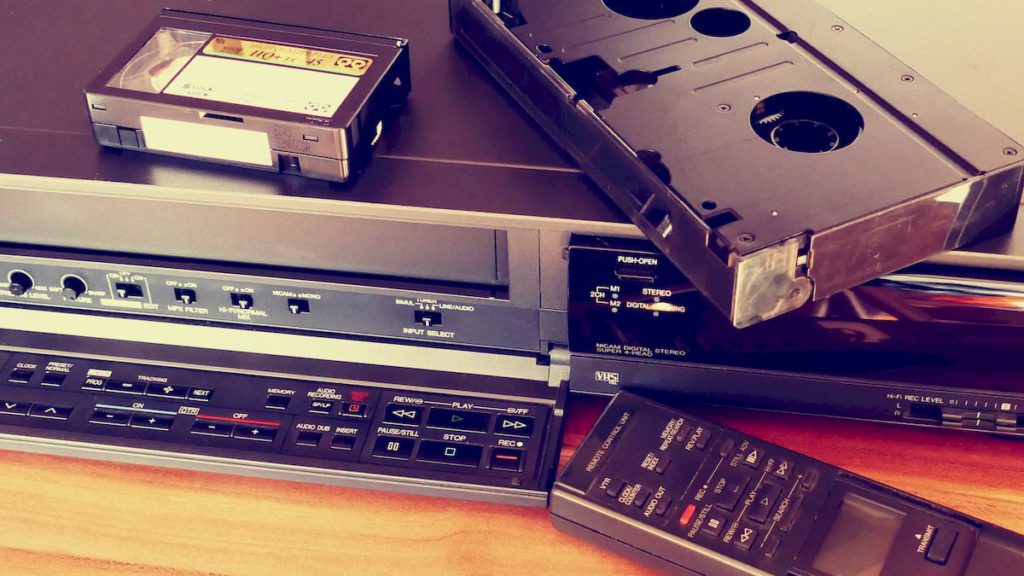
Back when movie nights demanded ritual, VHS tapes ruled our living rooms. You couldn’t skip the rewinding – Blockbuster’s “Be kind, please rewind” wasn’t just cute marketing. It was law.
Weekend rentals turned into treasure hunts through limited selections, with late fees hanging over your head. The bulky VCRs and frustrating tracking adjustments could make your favorite scene look like it was filmed during an earthquake. And let’s not forget how the video quality deteriorated with each viewing.
Digital tech sent VHS tapes crashing hard and fast. DVDs and streaming killed the video star, offering instant movies without the ceremony. These magnetic boxes now sit in thrift stores, gathering dust as symbols of when entertainment required actual effort but revolutionized home movie viewing.
23. Sony Walkman

The Sony Walkman forever changed how we experienced music. Its compact design freed us from living room stereos, letting you carry your favorite tunes anywhere.
Featuring the now-standard 3.5mm headphone jack and simple controls anyone could figure out, it wasn’t just a device – it was a cultural phenomenon that shaped music consumption in the 80s. The Walkman created personal space through music, enhancing individual identity in ways we now take for granted.
Cassettes dictated the experience – side-flipping and rewinding constantly, with limited battery life always a concern. Digital music players eventually made it obsolete, and Sony finally pulled the plug in 2010. But if you’ve ever popped in earbuds for your commute, you owe that freedom to this plastic pioneer.
22. Floppy Discs
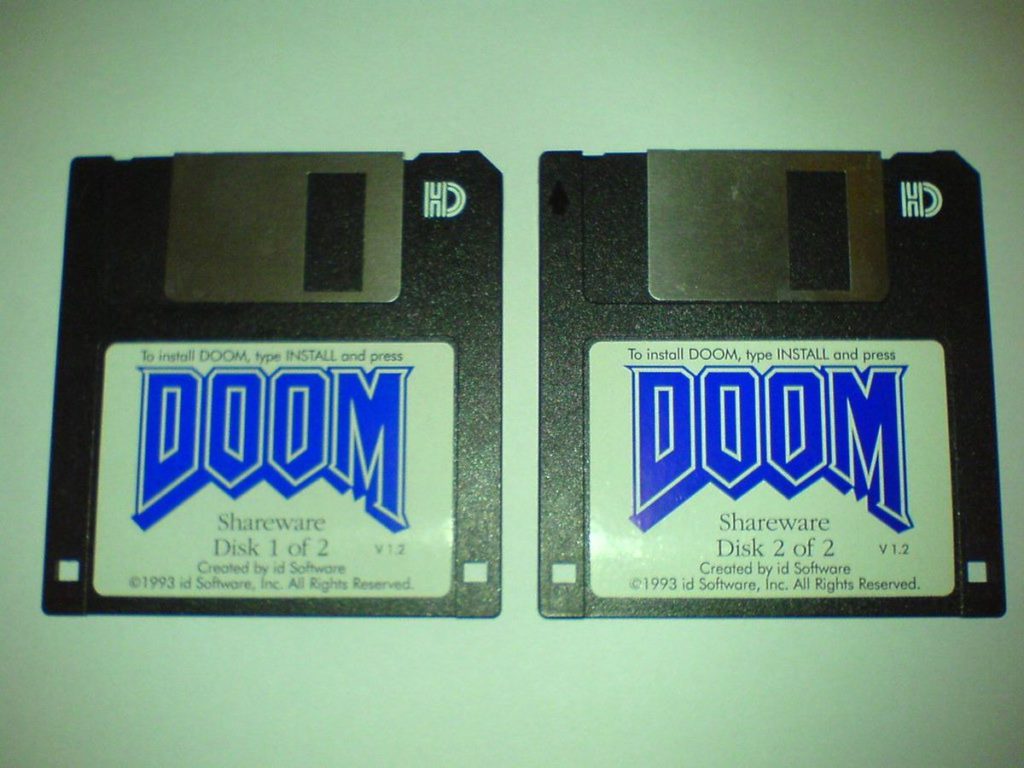
That satisfying click when sliding a floppy disc into your computer marked the start of computing for a generation. These square guardians stored and moved our data when “the cloud” just meant bad weather.
A standard disc held a mere 1.44MB – barely enough for a single smartphone photo today. Saving anything meant watching progress bars crawl across your screen. As for reliability? These physical nightmares were easily damaged and prone to data corruption that could wipe out your work instantly.
CDs, DVDs, and USB drives eventually made these plastic squares obsolete. Now floppy discs sit in museum displays, reminding us of the first widely used digital storage method for personal computers.
21. Pagers

Waiting for a message once made your heart race in a way notifications never will. Pagers provided wireless communication before cell phones, forcing users to find payphones to return calls. Doctors, executives, and yes, drug dealers all relied on these beeping lifelines.
During the 80s, pagers appeared everywhere as status symbols bridging the gap between being unreachable and too available. Early models only displayed numbers, creating coded communication between users.
Cell phones with voice calls and instant texts crushed the pager market. Yet walk through any hospital today, and you’ll still spot these dinosaurs – their reliable, discreet alerts remain valued where life and death decisions happen.
20. Boomboxes

Streets once pulsed with beats from shoulders instead of earbuds. Boomboxes blasted cassettes and radio to anyone within a city block, while hip-hop culture transformed them into weapons of mass disruption, providing soundtracks for breakdancing battles and block parties.
These audio monsters flaunted dual cassette decks, chrome details, and 10-inch woofers that could rattle windows. Carrying one wasn’t just about music – it was a statement about who you were and what you wanted the world to hear.
MP3 players killed these sidewalk stereos, putting personal soundtracks inside pockets instead of on shoulders. The image of a raised boombox remains powerful – a symbol of when music wasn’t just heard but shared.
19. Fax Machines

Paper rumbling and dial-up screeching once defined office life. Fax machines transmitted documents over telephone lines when “instant” meant minutes instead of seconds.
Business operations depended on them – contracts, invoices, and urgent memos traveled from building to building at the blazing speed of six minutes per page. The simple but painful process: feed document, dial number, pray it went through.
Email and digital document sharing made these paper-pushers obsolete. The machines that once seemed magical now collect dust in storage rooms, reminders of when “paperless” was science fiction.
18. Corded Telephones
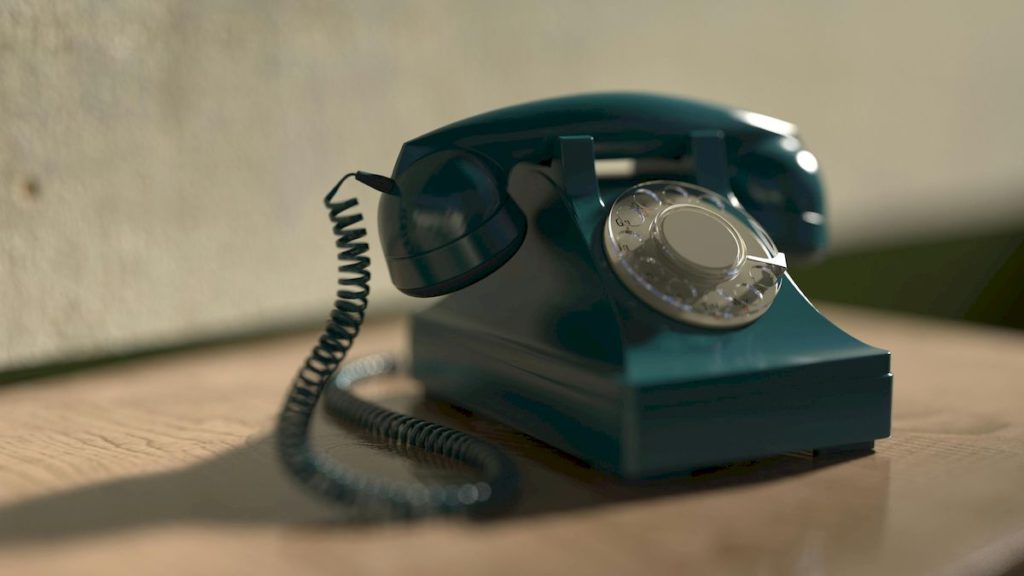
Phone conversations once kept people on leashes. Corded telephones tethered users to fixed locations, creating odd habits like stretching cords around corners or sitting on floors.
The coiled cord provided maybe 10 feet of freedom – just enough to reach the fridge during lengthy calls. Rotary dials or push buttons connected calls through telephone exchanges that now seem prehistoric.
Smartphones severed these cords forever, enabling conversations from virtually anywhere. These simple machines with one function – actual talking – now seem almost charming compared to the distracting pocket computers that replaced them.
17. Dot Matrix Printers

Robot battlefields have nothing on the noise level of 80s offices. Dot matrix printers hammered pins onto inked ribbons, creating characters from patterns of dots with cacophony that made concentration impossible.
Their distinctive buzzing announced completed print jobs like town criers. Businesses relied on them for continuous forms, generating multiple carbon copies when “backup” meant physical paper.
Low print quality produced grainy text and primitive graphics – but it did the job. Inkjet and laser printers pushed dot matrix into obsolescence with their quiet efficiency and crisp output.
16. Car Phone Antennas

Status symbols once sprouted from car roofs as metal rods. Car phone antennas marked the mobile elite, extending up to three feet to maximize signal reception for early car phones.
These metal flags announced “important person inside” – someone willing to pay upwards of $2 per minute to make calls from their vehicle. The taller the antenna, the stronger the signal and the bigger the ego.
Internal antennas in modern phones made these metal stalks unnecessary. For a brief moment, they represented the ultimate 80s power move, symbols of cutting-edge connectivity and expense accounts.
15. Rolodexes

Spinning card contraptions once hosted your entire social network. Rolodexes organized contacts before digital databases, storing names, numbers, and addresses on index cards you could flip through with satisfying clicks.
These rotating drums centralized your connections, though updates required manually scratching out old info and adding new cards. They proudly sat on desks, advertising your professional relationships.
Smartphones and cloud-based contact apps killed the Rolodex. Yet that tactile flip through alphabetized cards still feels more satisfying than scrolling through digital contacts.
14. Atari Consoles
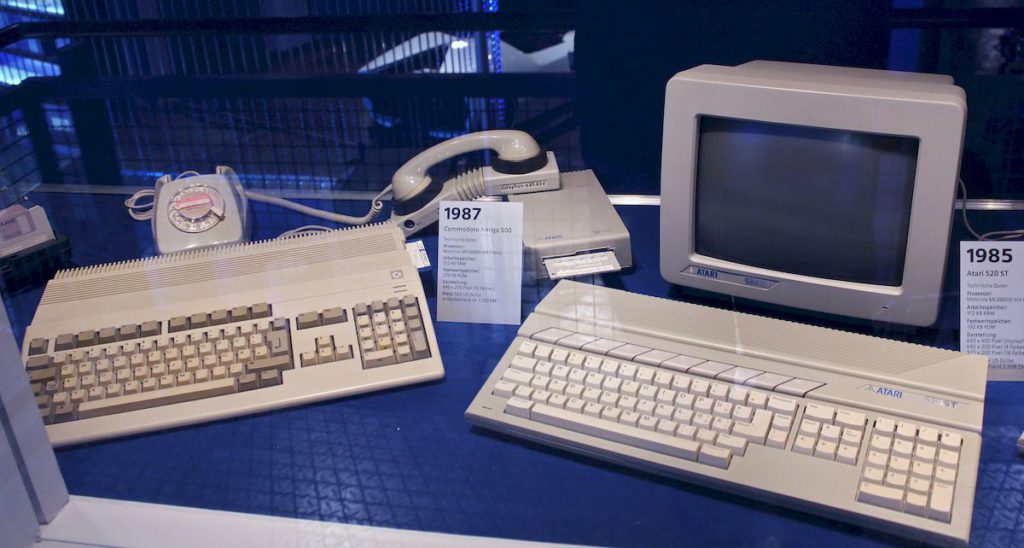
Suburban rec rooms hosted blocky spaceships and hungry yellow circles before high-def graphics existed. Atari consoles spearheaded the home video game revolution, bringing arcade experiences into living rooms.
Iconic games like Pac-Man and Space Invaders defined early gaming culture, captivating players for hours with simple joysticks and primitive graphics. What looks basic now was revolutionary then – the first step toward today’s immersive digital worlds.
More advanced gaming systems eventually supplanted Atari, offering better graphics and gameplay. Those original consoles deserve recognition as the pioneers that transformed entertainment technology.
13. Cassette Tapes

Hiss and pop from magnetic tape provided the soundtrack to a generation. Cassette tapes revolutionized audio recording and playback, democratizing music consumption like never before.
Creating mixtapes evolved into a cultural art form – personal statements crafted with patience and precision. Their 90-minute length forced tough choices about which songs made the cut. The Sony Walkman amplified cassette popularity, enabling truly mobile music experiences.
CDs and digital formats eventually buried cassettes, despite vinyl’s comeback. Those plastic rectangles represent something powerful – the first time average people could curate and share their musical identity.
12. CD-ROM Encyclopedias

Knowledge delivery once required spinning discs instead of wifi. CD-ROM encyclopedias provided vast information when the internet crawled through phone lines at dial-up speeds.
They transformed static facts into multimedia experiences with videos, sounds, and interactive elements. Students and researchers embraced them, enhancing learning while avoiding painful dial-up research sessions.
Online databases and websites eventually supplanted these discs. They bridged the gap between dusty library shelves and instant Google searches – the awkward teenage years of information access.
11. Cigarette Lighters in Cars

Built-in flame sources once came standard in virtually every vehicle. Cigarette lighters heated coiled metal to ignite cigarettes, offered in nearly every car model regardless of class.
These push-button fire starters were especially common in luxury models, reflecting an era when smoking while driving wasn’t just accepted but expected. As smoking rates declined, manufacturers replaced actual lighters with power outlets.
The 12-volt socket remains useful for charging devices, but the glowing coil is gone. Those lighters now appear as artifacts from a different world – one where cars enabled unhealthy habits instead of warning against them.
10. Blockbuster Video Rental Cards

Blue and yellow plastic once granted access to weekend entertainment. Blockbuster rental cards were essential for movie nights, allowing access to films and games from physical stores.
Visiting Blockbuster meant browsing actual aisles, hoping popular titles weren’t already gone. Late fees created special dread – the penalty for forgetting to rewind and return on time.
Digital streaming services crushed the rental store model, offering instant access without leaving home. The Blockbuster card now triggers nostalgia for a time when movie night required planning and pants.
9. TV Remote Clickers

Channel changing once produced actual sound effects. Remote clickers used ultrasonic sound to control TVs, freeing viewers from getting up every time they wanted a different channel.
These devices contained mechanical buttons emitting high-frequency clicks – sounds that drove pets crazy! Many functioned for 20+ years before breaking. The sound-based system wasn’t perfect, sometimes affected by jingling keys or other household noises.
Infrared and Bluetooth remotes replaced these noisy controllers, offering quieter, more reliable operation. Those old clickers represent the first taste of couch potato freedom.
8. Cassette Tape Answering Machines

Missed calls got captured on magnetic tape when voicemail wasn’t a concept. Answering machines recorded messages onto cassettes, providing primitive message storage for landline phones.
These boxes used separate tapes for outgoing greetings and incoming messages, with most maxing out around 30 minutes. Checking messages required physically pressing play and listening in real-time, rewinding if you missed something important.
Digital voicemail eventually killed these machines, storing messages more efficiently. The cassette answering machine gave us the first opportunity to screen calls and avoid unwanted conversations.
7. Polaroid Instant Cameras

Photography once developed before your eyes like magic. Polaroid cameras printed photos immediately, capturing moments in tangible form when “instant” meant minutes, not microseconds.
Shaking the developing print became a cultural ritual, even if the company insisted it wasn’t necessary. Images slowly revealed themselves, like memories materializing. Digital photography made Polaroids seem slow and expensive, offering instant results without film costs.
These cameras have made a hipster comeback, proving that sometimes slower, tangible experiences still matter in a digital world.
6. Discman

CD listening escaped living rooms with the introduction of the Discman. This revolution transformed music mobility, freeing listeners from cassette limitations with digital sound quality.
Carrying entire albums with crisp audio that didn’t degrade with each play became possible. Early models were bulky status symbols that skipped during movement and suffered from limited battery life.
MP3 players and streaming services eventually killed the Discman, putting entire music libraries in smaller packages. It represents that awkward middle phase between analog and fully digital music consumption.
5. CRT Monitors

Computer displays once outweighed the computers themselves. CRT monitors used cathode ray tubes, delivering rich colors and fast response times that serious users valued.
Gamers and graphic designers favored them for minimal motion blur and wide viewing angles. These monsters consumed valuable desk space with their depth, featured curved screens that distorted images, and could cause back injuries when moved.
Flat LCD and LED screens eventually made CRTs obsolete, offering thinner profiles and lower energy consumption. These bulky boxes now fill e-waste facilities, reminders of when computers commanded rooms rather than slipping into bags.
4. Cassette Decks in Cars

Dashboard slots once consumed rectangular plastic music carriers. Cassette decks dominated vehicle audio systems, providing entertainment for drivers and passengers before digital alternatives.
Creating mixtapes became essential for long drives, offering carefully sequenced songs for road trips. The decks often featured auto-reverse for continuous playback and sometimes equalizers for sound adjustment.
CD players and digital formats eventually took over. Those cassette decks represent a time when music required physical media and road trips needed advance planning.
3. Casio Calculator Watches
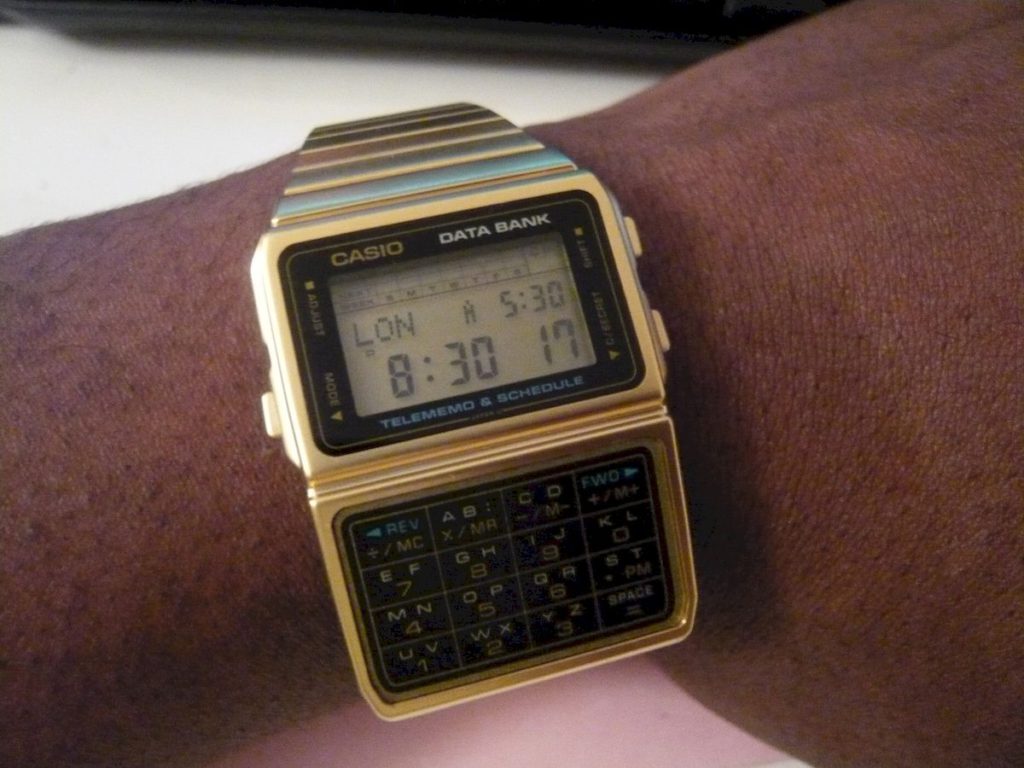
Wrist real estate once hosted computational power in miniature form. Casio calculator watches combined timekeeping with portable calculating capabilities, offering futuristic appeal.
Wearers could perform arithmetic by pressing tiny buttons, though people with large fingers struggled with the miniature keyboard. These watches projected a geeky image that somehow became fashionable.
Smartphones rendered calculator watches obsolete, providing superior computing power in more accessible formats. These digital pioneers demonstrated the first hints of what wearable technology could become.
2. Paper Maps

Navigation required unfolding knowledge larger than your windshield before GPS. Paper maps guided travelers through unknown territory without voice directions or traffic updates.
These detailed sheets displayed road networks, geographical features, and points of interest. Road trips demanded actual skills – interpreting symbols, estimating distances, and mastering the art of refolding (which most people never managed).
GPS devices and smartphone apps eventually made paper maps obsolete, offering real-time directions and traffic updates. Those crinkled, coffee-stained maps in glove compartments represented freedom and possibility in physical form.
1. Beepers for Video Games

Arcade management once relied on pocket-sized waitlist devices. Beeper systems enhanced gaming sessions, allowing players to save their place in line without hovering over machines.
These pagers notified gamers when their turn arrived, making arcades more social and less about territorial machine-guarding. They reduced competition for popular cabinets and allowed players to explore other games while waiting.
Online multiplayer and home consoles eventually made arcades less relevant. These beepers solved an analog problem with analog technology – letting kids know when it was finally their turn to play Street Fighter without throwing punches in real life. Enjoyed this piece on obsolete stuff from the ’80s? Here are a few more items that were still quite popular back then.





















